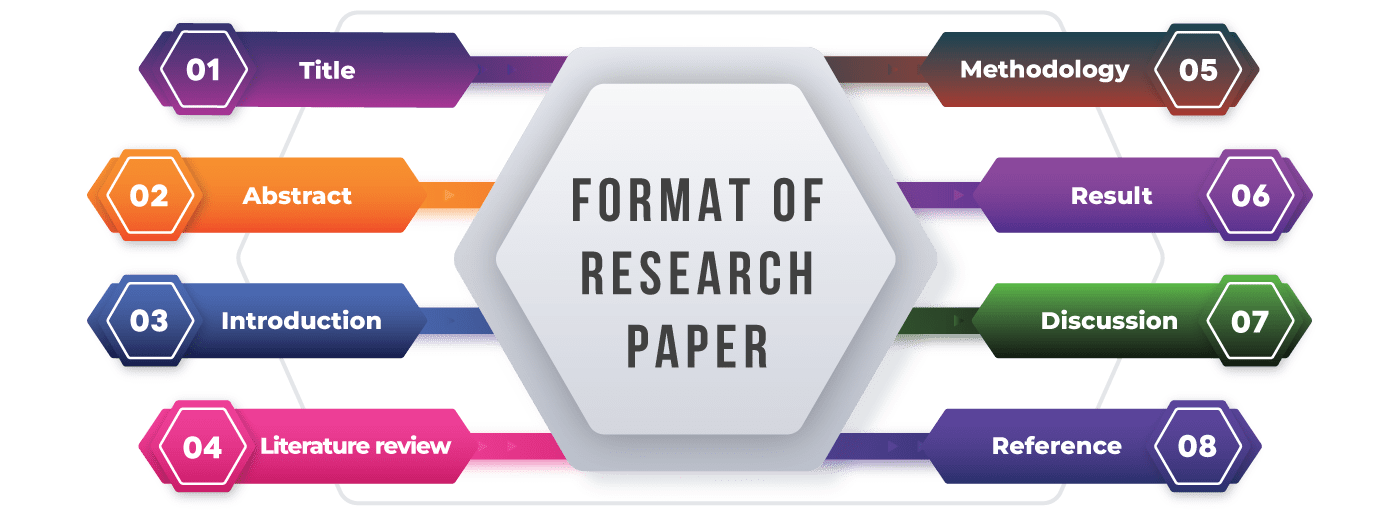How to Formatting a Research Paper?
March 20, 2024

One of the important processes during research writing is formatting the paper. Formatting a research paper is very essential to ensure that it meets the standards of academic publishing as well as it should effectively communicates your findings to the reader as well. Here's a step-by-step guide on how to format a research paper in a very ease way:
Title Page
Title page is very important. You need to include the title of your paper, your name, affiliation (institution or organization), and the date.
Optionally, you can include the names of your supervisors or advisors in your title page.
Abstract
It’s very important to write a concise summary of your research, and it typically around 150-250 words. It should be in a very concise and clear manner.
You need to highlight the study’s purpose, and the methods you used n your manuscript, major findings, as well as conclusions.
You need to ensure that the abstract provides a clear overview of your paper's content.
Introduction
In this preliminary part, you need to introduce the topic of your research as well as its significance. You need to provide background information and context to help the reader understand the problem you are addressing in a very clear manner. Your research paper should contain research question or hypothesis that your study mainly aims to answer.
Literature review:
It is very mandatory to review relevant literature and previous studies which should highly relate to your research topic. Your research paper should discuss key findings, theories, methodologies, and debates in the relevant field as well. The important role is to identify gaps or limitations in existing research.
Methods
You need to describe the research design, methodology, as well as procedures that you used in your study. It’s highly essential to provide some sufficient detail to allow other researchers to replicate your study in future. You need to concentrate on the data collection, sampling techniques, and data analysis methods and you need to include it in your research paper without fail.
Results
Your research manuscript should present the findings of your study in a very clear and organized manner. Need to use tables, figures, and charts to summarize data and also need to highlight key trends or patterns in your manuscript. It’s very important to provide descriptive statistics and, if applicable, add inferential statistics to support your conclusions in a very effective manner.
Discussion
You need to interpret and analyze the results of your study and need to concentrate on research question or hypothesis in your manuscript. Need to thoroughly discuss the potential implications of your findings and also their significance. Your manuscript should address any limitations or potential biases in your study and should focus on the suggested areas for future research.
Conclusion
In the final part, you need to summarize the main findings and contributions of your research. Just explore the significance of your study and its implications for theory, practice, or policy. Mostly, avoid in introducing any new information or arguments in the conclusion part.
References
Just list all sources cited in your paper by using a consistent citation style (e.g., APA, MLA, and Chicago). You need to ensure that each reference includes complete bibliographic information, including author(s), title, publication year, and source as well. It should be write up in this order.
Appendices
Just include any supplementary materials that are too detailed or very lengthy to be included in the main text. IN your manuscript, examples may include some raw data, survey instruments, or any detailed methodology descriptions.
Format of Research Paper

Formatting guidelines
- You need to follow the formatting guidelines specified by your instructor, institution, or the target journal.
- Always use a readable font (e.g., Times New Roman, Arial) and standard font size (e.g., 12 pt).
- You need to double-space the entire document, including the title page, abstract, main text, and references.
- Just, set 1-inch margins on all sides of the page.
- Page numbers are very important and it should start with the title page accordingly.
Formatting your research paper as per the guidelines is very much important for academic writings. To know more about research paper writing
